Rome Travel Guide: Top Attractions and Insider Tips
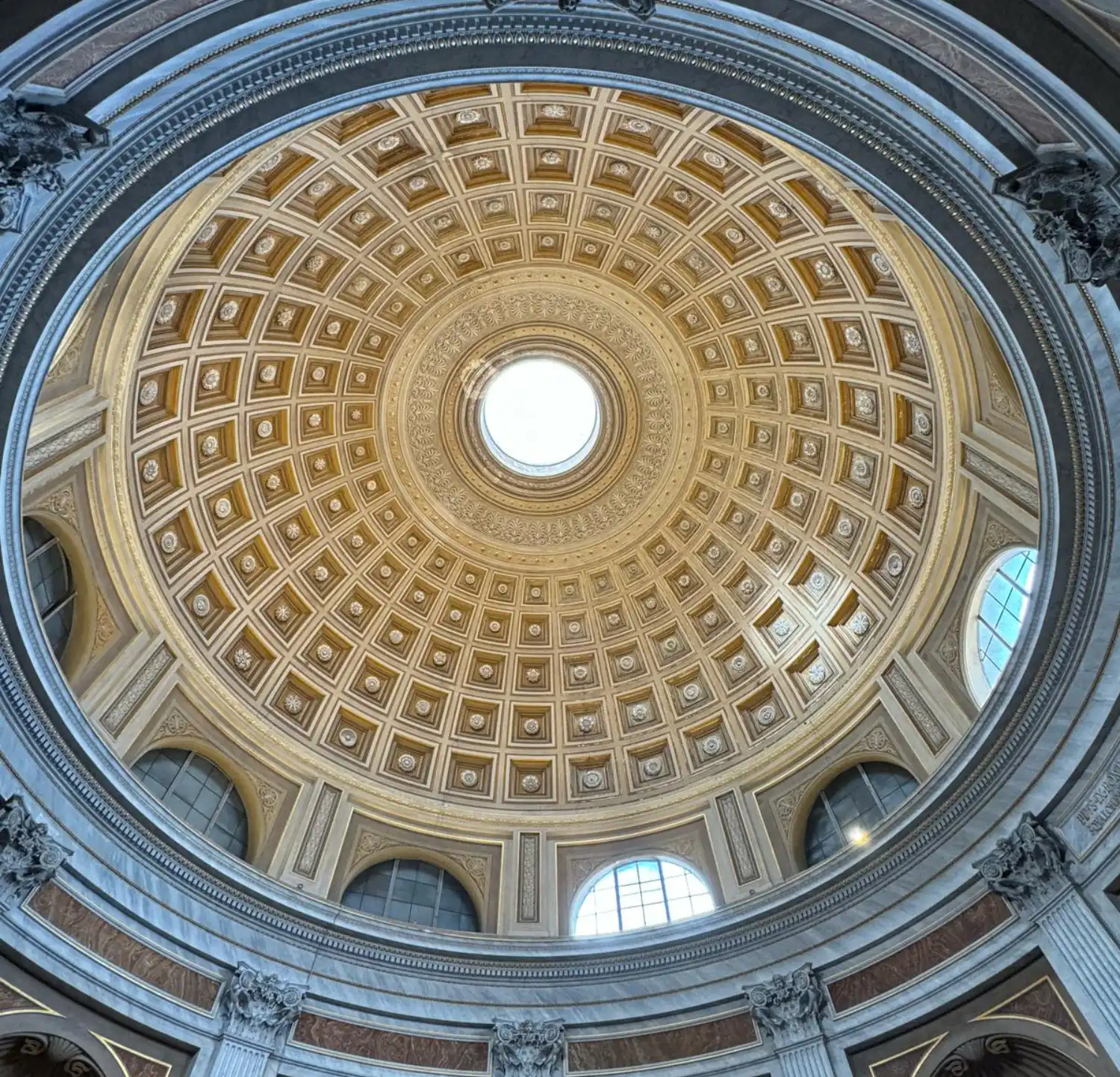
Rome, often called the Eternal City, is one of Europe’s most iconic and well-visited destinations, rich in history, culture, and breathtaking architecture. From ancient ruins to vibrant piazzas, Rome offers an unforgettable blend of the past and present.
Stroll along its charming cobblestone streets, enjoy a creamy gelato while admiring historic landmarks, or relax on the Spanish Steps as the city buzzes around you. History lovers can explore world-famous museums and archaeological sites, while food enthusiasts can indulge in everything from authentic Roman pasta dishes to crispy street-side pizza.
Whether you’re visiting for the history, food, or atmosphere, Rome has something magical for everyone. This guide will help you uncover the best of what the city has to offer!
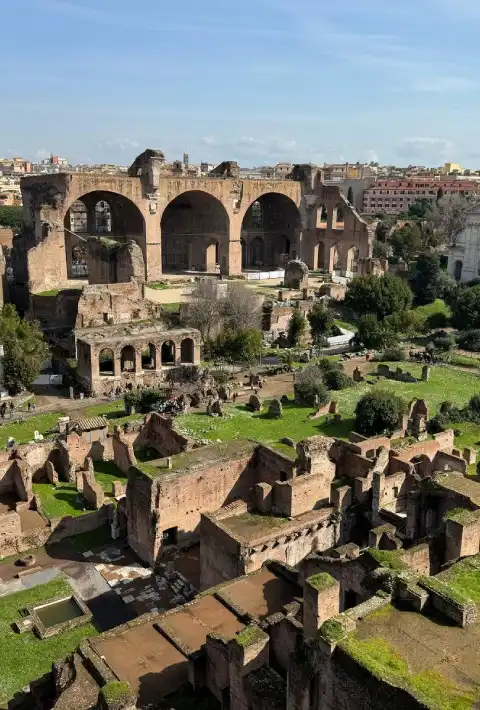
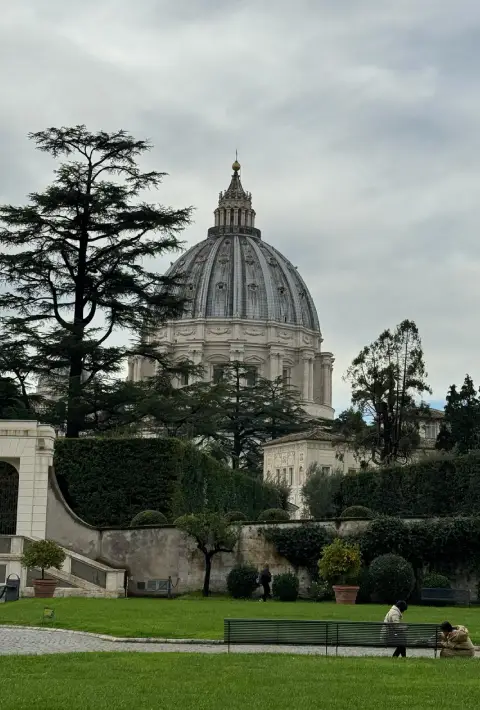
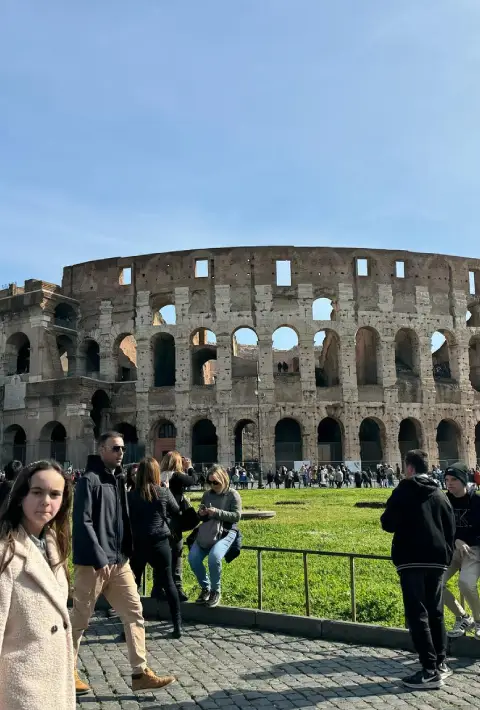
What to Expect in Rome
Rome is a city where ancient history meets modern life. Expect to be surrounded by stunning historical landmarks, from the grandeur of the Colosseum to the spiritual ambiance of St. Peter’s Basilica in Vatican City. The city’s vibrant streets are filled with charming cafes, bustling markets, and stylish boutiques, offering a blend of old-world charm and contemporary flair.
When it comes to weather, Rome enjoys a Mediterranean climate with hot summers and mild winters, making it a year-round destination. The city can get quite busy, especially during the peak tourist season (April to October), so be prepared for crowds at popular attractions.
Rome is also a paradise for food lovers, where every meal feels like an experience. You can expect to indulge in classic Italian dishes, from creamy carbonara to wood-fired pizzas, alongside excellent local wines.
As you explore, keep in mind that Rome is best enjoyed at a slower pace. Wander through its ancient streets, take a break at a piazza, and truly soak in the rich history and culture surrounding you.
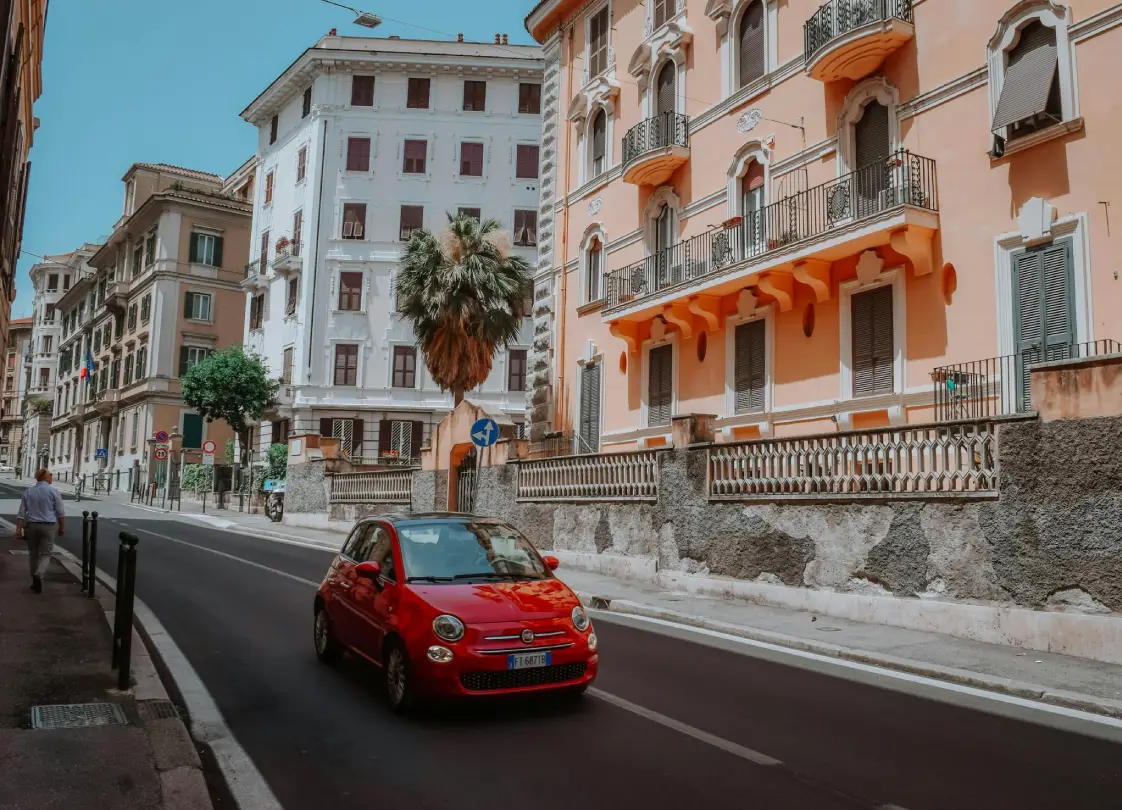
Getting Around Rome
Rome, the Eternal City, offers a variety of transportation options that make exploring its ancient streets and vibrant neighborhoods both convenient and enjoyable. Whether you’re wandering through historic sites, savoring Italian cuisine, or discovering hidden gems, getting around Rome is an adventure in itself.
1. Public Transportation
Rome’s public transportation system is extensive, including buses, trams, and the metro:
- Metro: Rome has three metro lines (A, B, and C) that connect major attractions like the Colosseum, Vatican City, and Termini Station. The metro is fast and ideal for longer distances.
- Buses & Trams: ATAC operates a wide network of buses and trams, reaching areas not accessible by the metro. While they can be slower due to traffic, they offer a great way to see the city.
- Tickets: Purchase tickets at metro stations, newsstands, or tobacco shops. A single ticket is valid for 100 minutes on all public transport.
2. Walking
Rome is a walkable city with narrow streets, charming piazzas, and countless landmarks close to each other. Strolling through Rome allows you to fully appreciate its history, architecture, and lively street scenes.
3. Biking & Scooters
For a quicker yet still immersive experience, consider renting a bike or an electric scooter. Several apps provide easy rentals, allowing you to zip through the city and cover more ground.
4. Taxis & Ride-Sharing
Official taxis in Rome are white with a “TAXI” sign on top. You can find them at designated taxi stands or book them through phone apps. Alternatively, ride-sharing services like Uber are also available, though taxis are often more convenient.
5. Car Rentals
While not recommended for city exploration due to traffic and limited parking, renting a car is a good option if you’re planning day trips to nearby destinations like Tivoli or the Amalfi Coast.
6. Hop-On, Hop-Off Buses
These tourist buses are a hassle-free way to visit Rome’s top attractions. They provide audio guides and the flexibility to explore at your own pace.
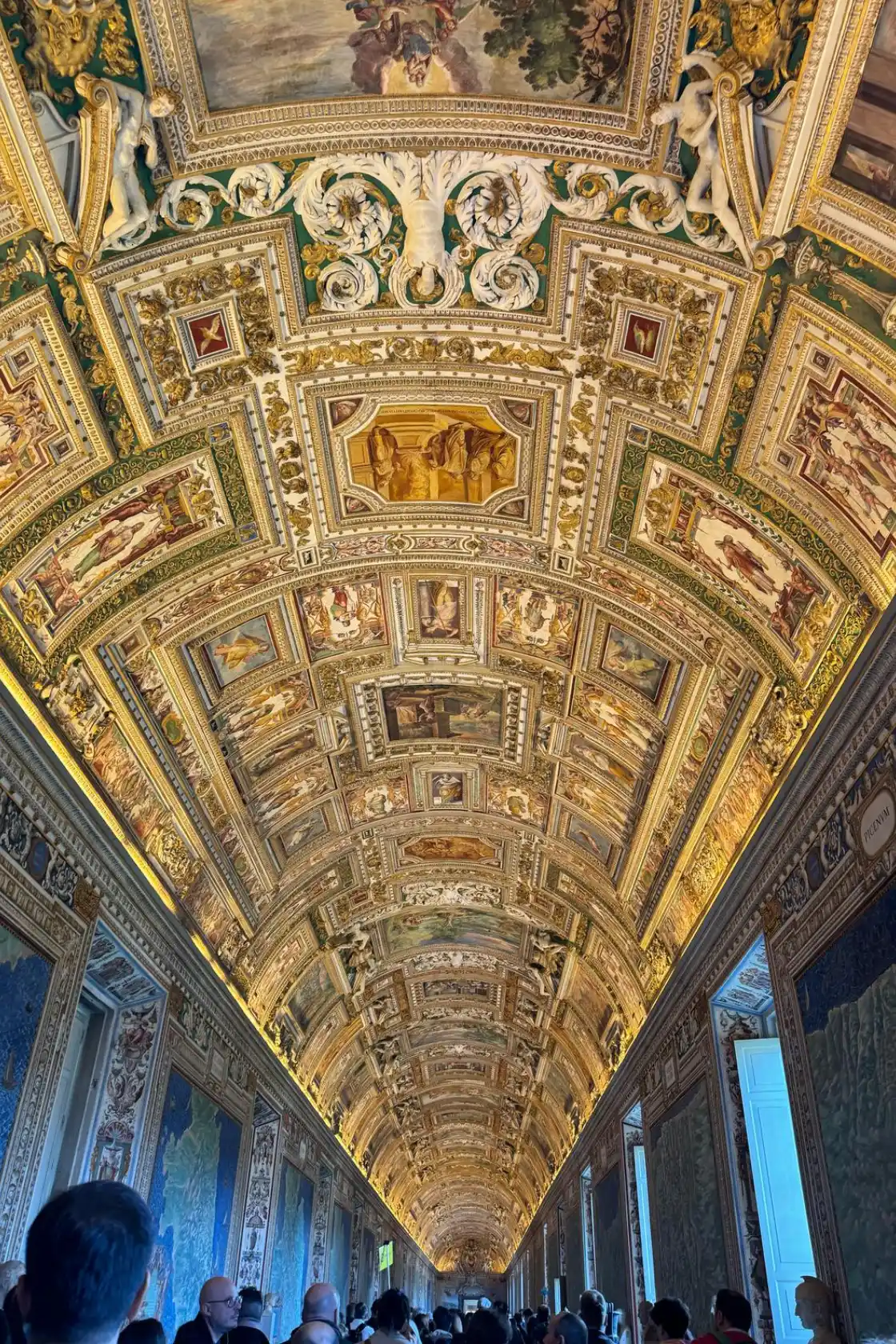


Exploring Rome: Top Attractions You Can't Miss in the Eternal City
Rome, a city where ancient history blends seamlessly with modern life, offers countless attractions that captivate every type of traveler. From iconic landmarks to hidden treasures, here are some must-visit spots in the Eternal City:
1. The Colosseum
The Colosseum, one of the New Seven Wonders of the World, is a symbol of Rome’s grandeur. This ancient amphitheater once hosted gladiator battles and public spectacles. A guided tour is highly recommended to explore its underground chambers and learn about its fascinating history.
2. The Roman Forum and Palatine Hill
Adjacent to the Colosseum, the Roman Forum and Palatine Hill offer a glimpse into ancient Roman life. Wander through the ruins of temples, basilicas, and public squares that were once the center of political and social life in Rome.
3. The Vatican City
A visit to the world’s smallest country is a must while in Rome:
- St. Peter’s Basilica: An architectural marvel and the largest church in the world. Don’t miss climbing to the dome for panoramic views of Rome.
- The Vatican Museums: Home to an impressive collection of art, including the Sistine Chapel, where Michelangelo’s masterpiece adorns the ceiling.
4. The Pantheon
The Pantheon, a former Roman temple, is known for its remarkable dome and oculus. The building, nearly 2,000 years old, is incredibly well-preserved and remains a functioning church today.
5. Trevi Fountain
No trip to Rome is complete without tossing a coin into the Trevi Fountain. This Baroque masterpiece is not only stunning but also steeped in tradition—throwing a coin over your shoulder ensures your return to Rome.
6. Piazza Navona
This lively square is filled with street artists, cafes, and three magnificent fountains, including Bernini’s Fountain of the Four Rivers. It’s the perfect spot to relax and soak in Rome’s vibrant atmosphere.
7. Spanish Steps
Climb the 135 Spanish Steps to the Trinità dei Monti church. At the base, the bustling Piazza di Spagna is surrounded by high-end shops and charming streets.
8. Castel Sant’Angelo
Originally built as a mausoleum for Emperor Hadrian, Castel Sant’Angelo has served as a fortress, papal residence, and museum. The terrace offers stunning views of the city and the Tiber River.
9. Villa Borghese and Galleria Borghese
Escape the city’s hustle by exploring Villa Borghese’s lush gardens. The Galleria Borghese museum inside houses an exceptional collection of art, including works by Bernini, Caravaggio, and Raphael.
10. Trastevere
This charming neighborhood is known for its narrow cobblestone streets, colorful buildings, and lively nightlife. It’s a great place to experience authentic Roman cuisine and culture.

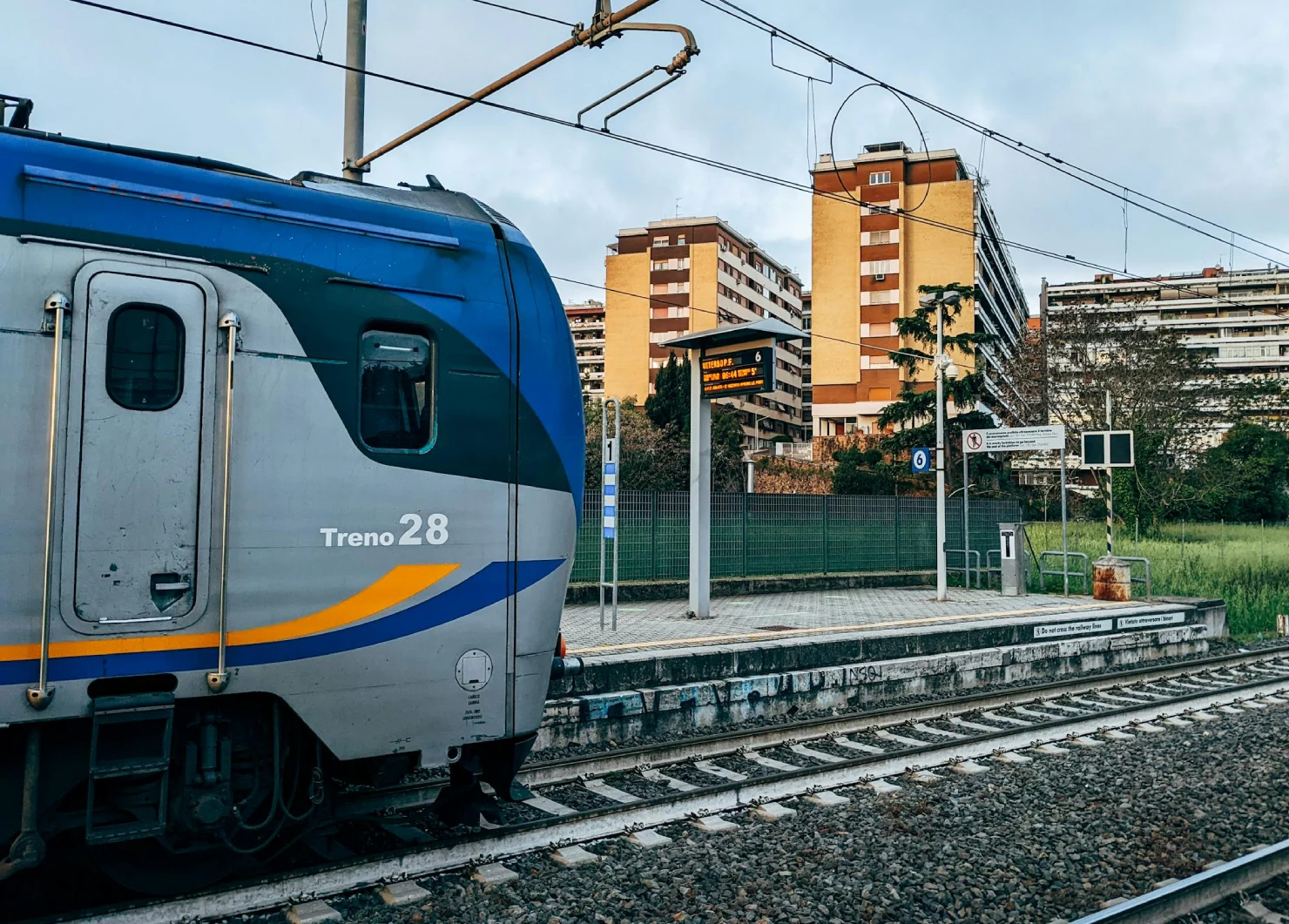
Getting Around Rome: A Complete Guide to Transportation Options
Navigating Rome is an adventure in itself, with a blend of ancient streets and modern conveniences. Whether you’re exploring historic landmarks or discovering hidden neighborhoods, here are the best ways to get around the Eternal City:
1. Public Transportation
Rome’s public transportation system is operated by ATAC, offering an extensive network of buses, trams, and the metro:
- Metro: Rome’s metro has three lines—A (Orange), B (Blue), and C (Green)—connecting key attractions like the Colosseum, Vatican City, and Termini Station. While the metro is fast, its coverage is limited compared to other European cities.
- Buses & Trams: Buses and trams cover a broader area, reaching many neighborhoods not served by the metro. However, they can be slower due to traffic, especially during rush hours.
- Tickets & Passes: Purchase tickets at metro stations, newsstands, or tobacco shops. Options include single-ride tickets, 24-hour passes, or the Roma Pass, which offers unlimited travel and museum discounts.
2. Walking
Rome is best experienced on foot. The city’s compact historic center is perfect for strolling, with iconic sites like the Trevi Fountain, Pantheon, and Spanish Steps within walking distance of each other. Wear comfortable shoes to handle cobblestone streets!
3. Biking & Electric Scooters
For those who prefer a bit more speed, renting a bike or an electric scooter is a fun option. Several app-based services, such as Lime and Bird, allow you to pick up and drop off scooters throughout the city.
4. Taxis & Ride-Sharing
- Taxis: Official taxis are white with a “TAXI” sign on top. They can be found at designated stands or booked by phone. Make sure the meter is running to avoid overcharging.
- Ride-Sharing: Uber operates in Rome, primarily offering premium services (Uber Black). Local ride-hailing apps like Free Now are also available.
5. Car Rentals
While driving in Rome is not recommended due to traffic, limited parking, and the city’s ZTL (limited traffic zones), renting a car can be a good option for day trips to nearby destinations like Pompeii or Tuscany.
6. Hop-On, Hop-Off Buses
These tourist-friendly buses provide an easy and informative way to visit major attractions. With audio guides and the flexibility to explore at your own pace, they’re perfect for first-time visitors.
7. Vespa & Scooter Rentals
Embrace the Italian way of life by renting a Vespa! It’s a fantastic way to explore the city and feel like a local. Just be cautious, as Roman traffic can be a bit chaotic.
8. Boat Rides on the Tiber River
For a unique perspective of Rome, take a boat tour along the Tiber River. These cruises offer a relaxing way to see sights like Castel Sant’Angelo and Tiber Island.
Tips for Getting Around Rome
- Avoid Rush Hours: Public transportation can be crowded during morning and evening rush hours.
- Validate Your Tickets: Always validate your bus, tram, or metro ticket to avoid fines.
- Stay Aware of Pickpockets: Especially on crowded buses and metro lines.
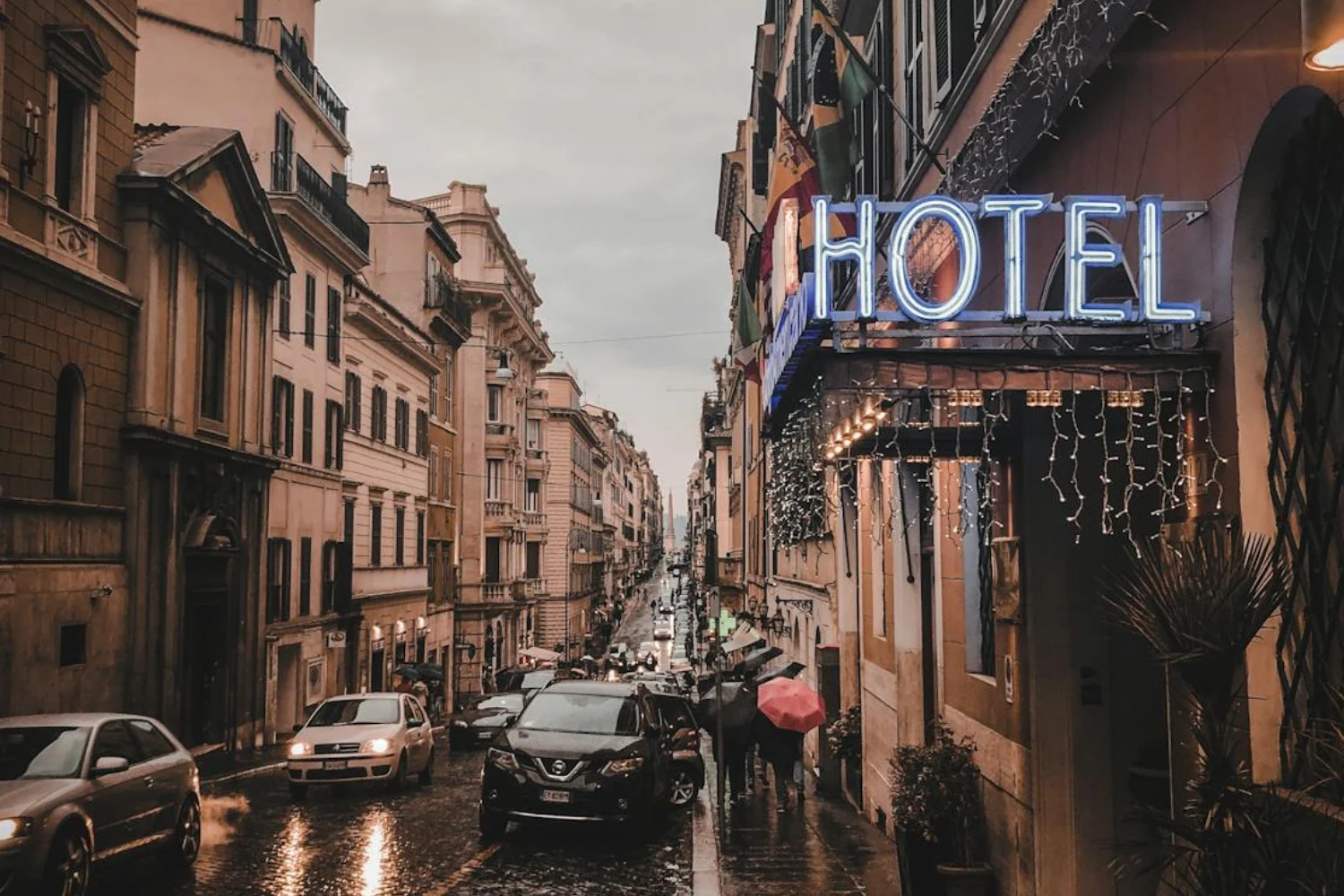
Where to Stay in Rome: Accommodation Types for Every Traveler
Rome offers a wide range of accommodations, from luxury hotels to budget-friendly hostels, ensuring every traveler finds the perfect stay. Whether you’re looking for a five-star experience, a cozy boutique hotel, or an affordable apartment, here are the best accommodation options in the Eternal City:
1. Luxury Hotels (€300+ per night)
For those seeking elegance and world-class service, Rome’s luxury hotels offer stunning views, fine dining, and premium amenities.
Best Areas: Spanish Steps, Piazza Navona, Vatican City
Top Picks:
- Hotel de Russie – A 5-star retreat with a beautiful garden and spa.
- Hassler Roma – A historic luxury hotel offering breathtaking city views.
- The St. Regis Rome – Known for its grand interiors and exceptional service.
2. Boutique & Mid-Range Hotels (€100–€300 per night)
Boutique hotels provide a mix of comfort and character, perfect for travelers wanting a unique experience.
Best Areas: Trastevere, Monti, Campo de’ Fiori
Top Picks:
- Nerva Boutique Hotel – Stylish rooms near the Roman Forum.
- Hotel Artemide – A mid-range hotel with modern comforts and a rooftop restaurant.
- The Fifteen Keys Hotel – A charming boutique hotel in Monti.
3. Budget Hotels & B&Bs (€50–€100 per night)
Budget-friendly hotels and bed & breakfasts offer a comfortable stay at a lower cost. Many family-run B&Bs provide a local touch and homemade breakfast.
Best Areas: Termini Station, San Giovanni, Testaccio
Top Picks:
- The Beehive – A budget-friendly eco-conscious hotel near Termini.
- Domus Helena – A clean and well-rated B&B run by nuns.
- Trastevere’s Friends – A cozy and affordable guesthouse.
4. Hostels (€20–€50 per night)
Ideal for backpackers and solo travelers, hostels in Rome offer dormitory-style and private rooms with social vibes.
Best Areas: Termini, San Lorenzo, Trastevere
Top Picks:
- The Yellow – A lively hostel with a bar and social events.
- Alessandro Palace Hostel – Offers a rooftop terrace and budget-friendly stays.
- Generator Rome – A stylish hostel with modern amenities.
5. Apartments & Vacation Rentals (€50–€200 per night)
For a more home-like experience, renting an apartment or Airbnb is great for families, groups, or longer stays.
Best Areas: Prati, Trastevere, Pantheon area
Top Picks:
- Sonder Apartments – Modern and well-located rentals.
- Roma Slow Home – A charming apartment near Vatican City.
- Cozy Trastevere Loft – Perfect for an authentic Roman experience.
6. Monastery Stays (€50–€150 per night)
For a peaceful and unique experience, some monasteries offer accommodations at affordable rates.
Best Areas: Near the Vatican, Aventine Hill
Top Picks:
- Casa di Santa Brigida – A serene stay run by nuns in Piazza Farnese.
- Villa Rosa – A tranquil retreat with garden views.
7. Camping & Outdoor Stays (€20–€80 per night)
For budget travelers who enjoy nature, there are campgrounds and bungalow parks outside the city.
Best Areas: Outside central Rome, near Vatican & Trastevere
Top Picks:
- Camping Village Roma – Budget-friendly cabins and camping near Vatican City.
- Fabulous Village – A family-friendly camping site with pools and restaurants.
Tips for Choosing Accommodation in Rome
✅ Book in Advance: Rome is a top tourist destination, so early booking ensures better prices.
✅ Check Location: Staying near a metro or bus stop makes sightseeing easier.
✅ Consider Extra Fees: Some hotels charge a city tax (€3–€7 per night).

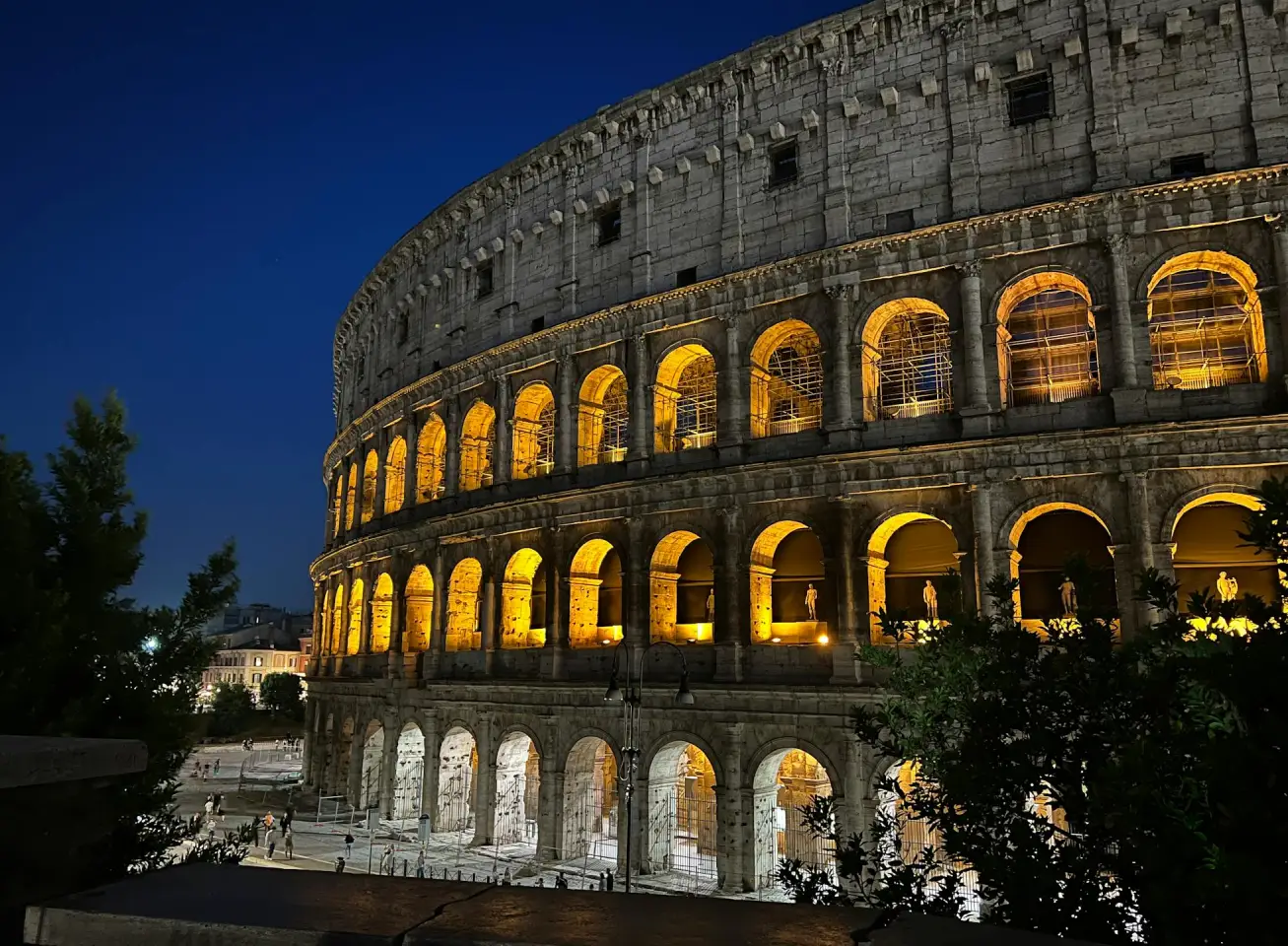
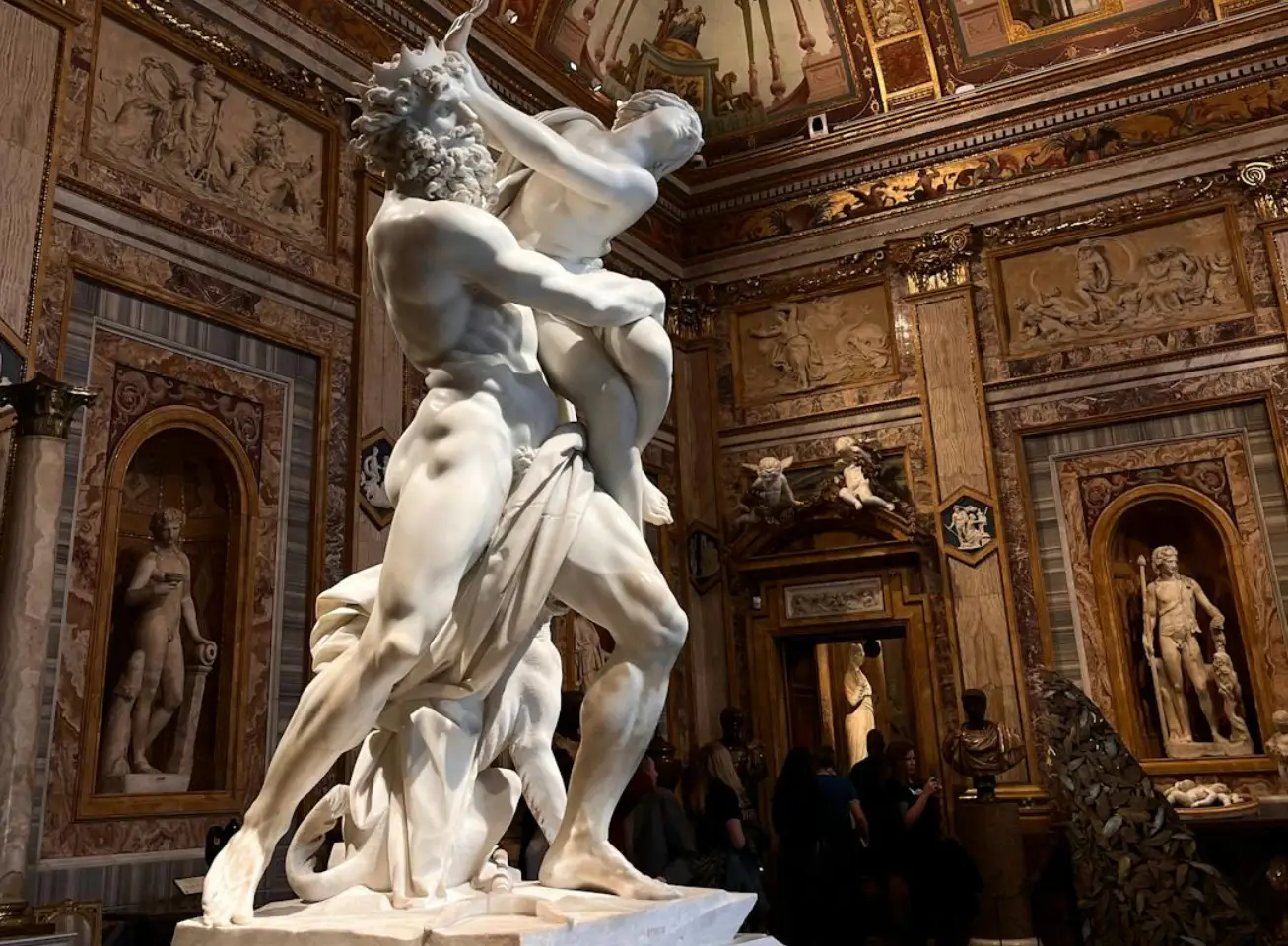
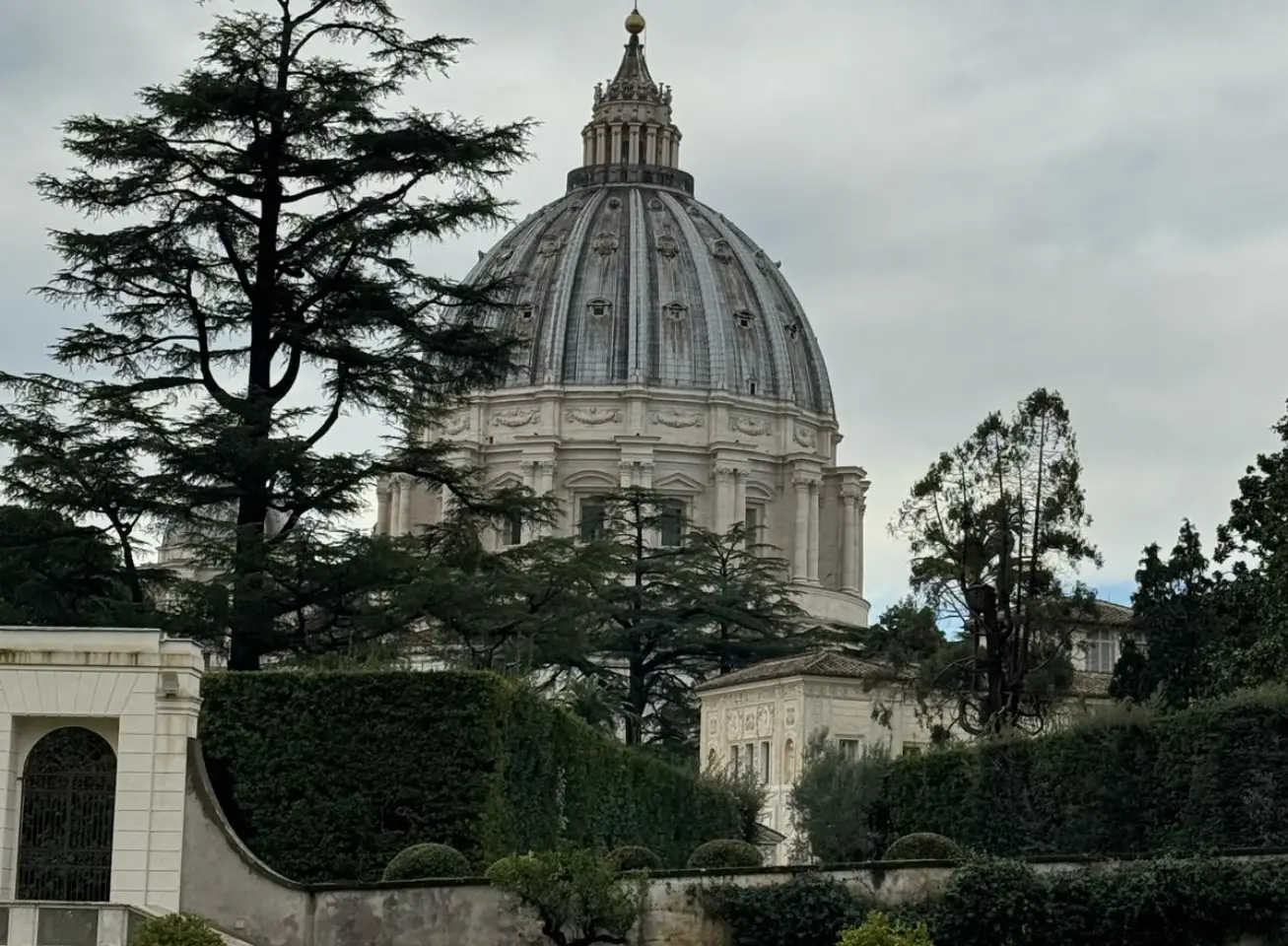
Top Activities to Do in Rome: Unforgettable Experiences in the Eternal City
Rome is more than just historic landmarks—it’s a city full of vibrant culture, delicious food, and unique experiences. Here are some of the best activities to make your trip truly memorable:
1. Explore the Ancient Ruins
- Walk through the Colosseum, imagining gladiator battles.
- Wander the Roman Forum, the heart of ancient Rome.
- Climb Palatine Hill for panoramic views of the city.
2. Toss a Coin in the Trevi Fountain
Legend says tossing a coin over your left shoulder ensures a return to Rome. This Baroque masterpiece is even more magical when lit up at night.
3. Visit Vatican City
- Admire Michelangelo’s frescoes in the Sistine Chapel.
- Climb St. Peter’s Basilica’s dome for breathtaking city views.
- Explore the Vatican Museums, home to centuries of art and history.
4. Stroll Through Rome’s Piazzas
- Enjoy street performers in Piazza Navona.
- Relax at Piazza Venezia, with views of the Altare della Patria.
- Experience the charm of Campo de’ Fiori, known for its markets and nightlife.
5. Take a Food Tour & Try Roman Specialties
Rome’s cuisine is legendary! Join a food tour or try these must-eat dishes:
🍝 Carbonara – Pasta with eggs, pecorino cheese, pancetta, and pepper.
🍕 Pizza al Taglio – Roman-style pizza sold by the slice.
🍷 Aperitivo – Enjoy drinks and snacks before dinner, a Roman tradition.
6. Go Underground in Rome’s Catacombs
Discover Rome’s eerie but fascinating past by visiting the underground Catacombs of San Callisto or San Sebastiano, where early Christians were buried.
7. Rent a Vespa and Explore Like a Local
Channel your inner Roman by renting a Vespa and zipping through the city streets. Just be prepared for Rome’s traffic!
8. Enjoy the Sunset at Gianicolo Hill
For a breathtaking sunset view, head to Gianicolo Hill, one of Rome’s highest points, offering a stunning panorama of the city.
9. Experience Rome’s Nightlife
- Sip cocktails at rooftop bars like Terrazza Borromini.
- Explore Trastevere’s lively bars and restaurants.
- Take a moonlit tour of the Colosseum for a unique experience.
10. Take a Day Trip from Rome
- Tivoli – Visit Villa d’Este’s fountains and Hadrian’s Villa.
- Ostia Antica – Explore a well-preserved ancient Roman town.
- Castelli Romani – Taste local wines in Rome’s countryside.


Savoring Rome: A Guide to Local Food and Dining Experiences
Rome’s culinary scene is as rich as its history. From classic pasta dishes to street food delights, the Eternal City offers a feast for every foodie. Here’s how to enjoy the best of Roman cuisine:
Traditional Roman Dishes to Try
- Carbonara: Creamy pasta with eggs, Pecorino Romano cheese, guanciale (pork cheek), and black pepper—no cream needed!
- Cacio e Pepe: A simple yet flavorful pasta made with Pecorino Romano cheese and black pepper.
- Amatriciana: Pasta with tomato sauce, guanciale, and Pecorino cheese, often served with bucatini pasta.
- Gricia: The “white” version of Amatriciana, without tomatoes but packed with guanciale and Pecorino.
- Saltimbocca: Veal slices with prosciutto and sage, cooked in white wine and butter.
- Supplì: Fried rice balls filled with ragù and mozzarella—Rome’s answer to Sicily’s arancini.
- Artichokes:
- Carciofi alla Romana: Braised artichokes with herbs and garlic.
- Carciofi alla Giudia: Jewish-style deep-fried artichokes, crispy and golden.
- Trapizzino: A modern Roman street food—pizza dough pockets stuffed with traditional Italian fillings like meatballs or chicken cacciatore.
🍷 Must-Try Roman Beverages
- Frascati Wine: A local white wine, perfect with Roman pasta dishes.
- Aperol Spritz: A refreshing aperitivo, best enjoyed at a piazza café.
- Espresso: When in Rome, drink coffee like a Roman—standing at the bar!
- Limoncello: A zesty lemon liqueur, often served as a digestif.
🍽️ Best Dining Experiences in Rome
1. Traditional Roman Trattorias
- Trattoria da Enzo al 29 (Trastevere): Famous for Carbonara and Cacio e Pepe.
- Roscioli (Campo de’ Fiori): A deli-restaurant offering top-quality meats, cheeses, and pasta dishes.
- Felice a Testaccio (Testaccio): Known for their creamy Cacio e Pepe, mixed at the table.
2. Authentic Pizzerias
- Pizzeria Ai Marmi (Trastevere): A bustling spot serving Roman-style thin-crust pizza.
- Antico Forno Roscioli (Centro Storico): Great for pizza al taglio (pizza by the slice).
- Bonci Pizzarium (Near Vatican): Famous for gourmet pizza al taglio with unique toppings.
3. Street Food Markets
- Mercato Testaccio: A lively market with fresh produce, street food, and local specialties.
- Campo de’ Fiori Market: One of Rome’s oldest markets, offering fresh fruits, vegetables, and Italian products.
- Eataly Rome: A haven for Italian food lovers, featuring markets, restaurants, and cooking classes.
4. Fine Dining & Modern Italian
- La Pergola (Cavalieri Waldorf Astoria): Rome’s only three Michelin-starred restaurant, offering gourmet Italian cuisine with stunning views.
- Glass Hostaria (Trastevere): A Michelin-starred restaurant with modern twists on Italian classics.
- Aroma (Colosseum Area): Enjoy refined dishes with an incredible view of the Colosseum.
💡 Dining Tips in Rome
- Eat Like a Local: Lunch is typically from 1 PM to 3 PM, and dinner starts around 8 PM.
- Avoid Tourist Traps: Steer clear of restaurants with pushy hosts and multi-language menus near major attractions.
- Cover Charges: Many restaurants have a “coperto” (cover charge) of a few euros per person.
- Tipping: Not obligatory, but rounding up the bill or leaving a few euros for good service is appreciated.
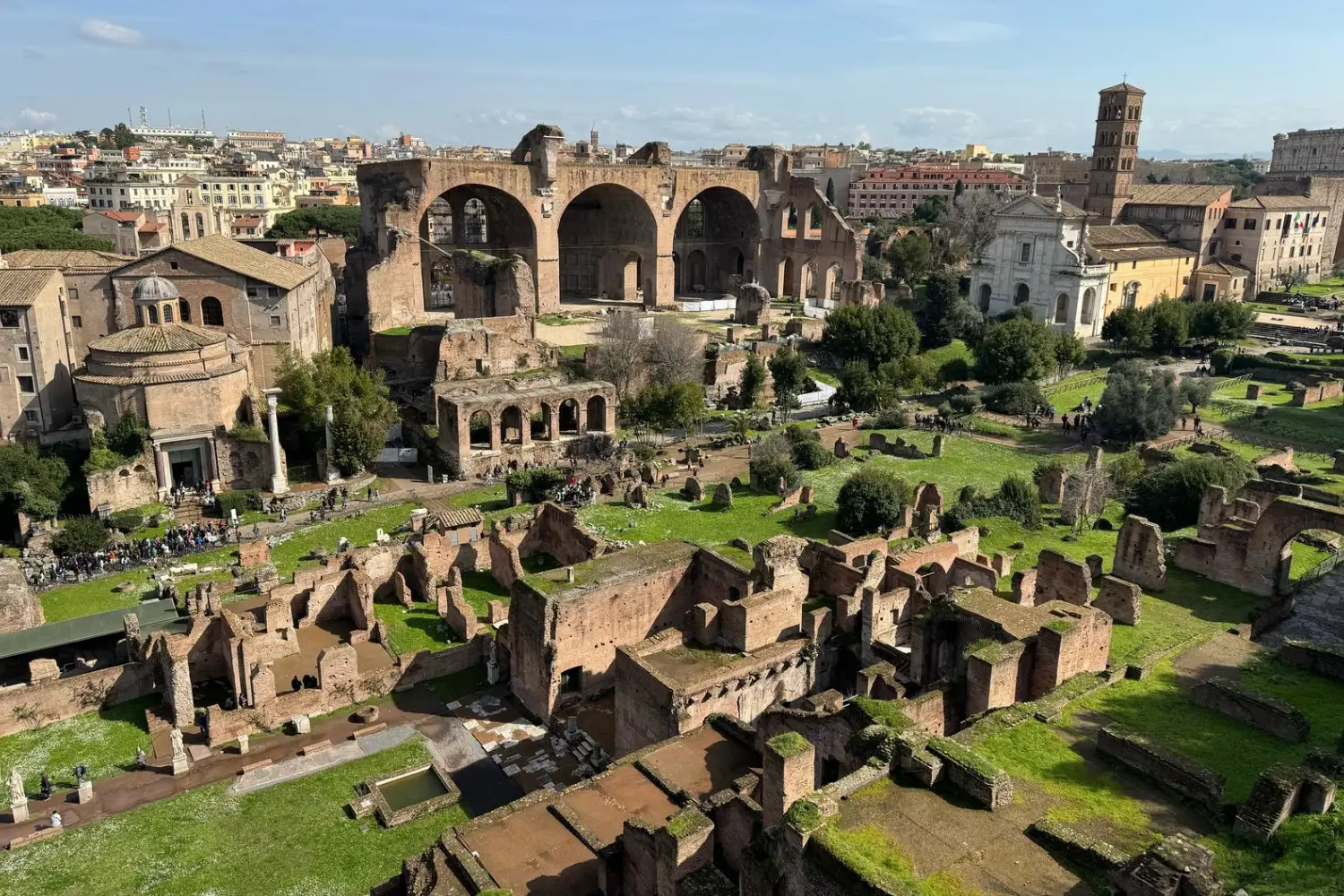
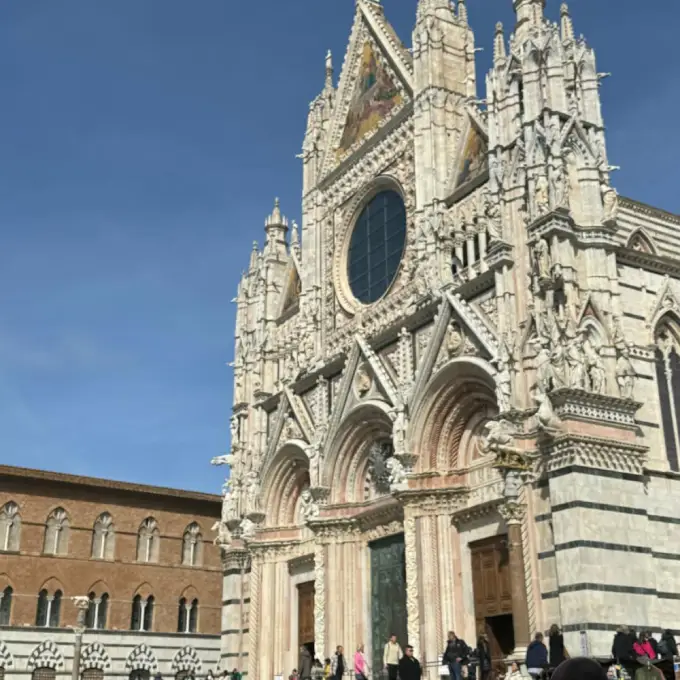

Perfect 3-Day Rome Itinerary: Explore the Eternal City
If you have just three days in Rome, you can still experience the city’s most iconic landmarks, indulge in delicious food, and soak up the atmosphere of this historic capital. Here’s a well-balanced itinerary to help you make the most of your time.
Day 1: Ancient Rome & Classic Landmarks
Morning: Colosseum & Roman Forum
- Start your day early at the Colosseum, Rome’s most famous landmark. Book tickets in advance to skip the lines.
- Walk through the Roman Forum, the ancient city center where emperors once ruled.
- Climb Palatine Hill for a stunning view of the ruins and the city.
Afternoon: Piazza Venezia & Pantheon
- Stop at Piazza Venezia and admire the Altare della Patria (Altar of the Fatherland).
- Wander through Piazza del Campidoglio, designed by Michelangelo.
- Visit the Pantheon, one of Rome’s best-preserved ancient buildings, and marvel at its massive dome.
- Enjoy lunch at a local trattoria near Piazza Navona—try Cacio e Pepe or Carbonara.
Evening: Trevi Fountain & Spanish Steps
- Toss a coin into the Trevi Fountain to ensure your return to Rome.
- Climb the Spanish Steps for a beautiful sunset view.
- End your day with dinner at a traditional Roman restaurant in Trastevere.
Day 2: Vatican City & Hidden Gems
Morning: Vatican Museums & St. Peter’s Basilica
- Start at the Vatican Museums—book a morning tour to see the Sistine Chapel before the crowds.
- Visit St. Peter’s Basilica, the largest church in the world. Climb the dome for breathtaking views.
Afternoon: Castel Sant’Angelo & Trastevere
- Walk along the Passetto di Borgo, an ancient secret passage connecting the Vatican to Castel Sant’Angelo.
- Cross the Ponte Sant’Angelo bridge, lined with statues designed by Bernini.
- Head to Trastevere, Rome’s bohemian district, for lunch at a family-run trattoria.
Evening: Gianicolo Hill & Roman Nightlife
- Hike up Gianicolo Hill for a panoramic sunset over Rome.
- Have an aperitivo (pre-dinner drink) at Piazza Santa Maria in Trastevere.
- Explore Trastevere’s charming streets and enjoy a lively Roman dinner.
Day 3: Markets, Food & Day Trip Option
Morning: Campo de’ Fiori & Jewish Ghetto
- Stroll through Campo de’ Fiori, one of Rome’s oldest markets, and try fresh Italian produce.
- Visit the Jewish Ghetto, home to some of the city’s best food, including Carciofi alla Giudia (Jewish-style fried artichokes).
- See the Theatre of Marcellus, an ancient Roman theater that resembles a mini Colosseum.
Afternoon Option 1: Explore More of Rome
- Visit Villa Borghese, a stunning park with gardens and museums.
- Check out Galleria Borghese, home to masterpieces by Caravaggio and Bernini.
- Relax at a rooftop café with views of the Altare della Patria.
Afternoon Option 2: Half-Day Trip from Rome
- Take a short train ride to Tivoli to explore Villa d’Este and its famous fountains.
- Visit Ostia Antica, an ancient Roman port city with well-preserved ruins.
Evening: Farewell Dinner
- Enjoy your last night with a fine dining experience at Aroma (with a view of the Colosseum) or a traditional trattoria in Testaccio, known for authentic Roman cuisine.
- Take one last night stroll past the Trevi Fountain, beautifully illuminated at night.
Final Tips for Your 3-Day Rome Trip
✅ Book tickets in advance for major attractions to save time.
✅ Wear comfortable shoes—you’ll be walking a lot on cobblestone streets.
✅ Use public transport (metro, buses) or rent a Vespa for a local experience.
✅ Try different Roman dishes each day—don’t stick to just pizza and pasta!
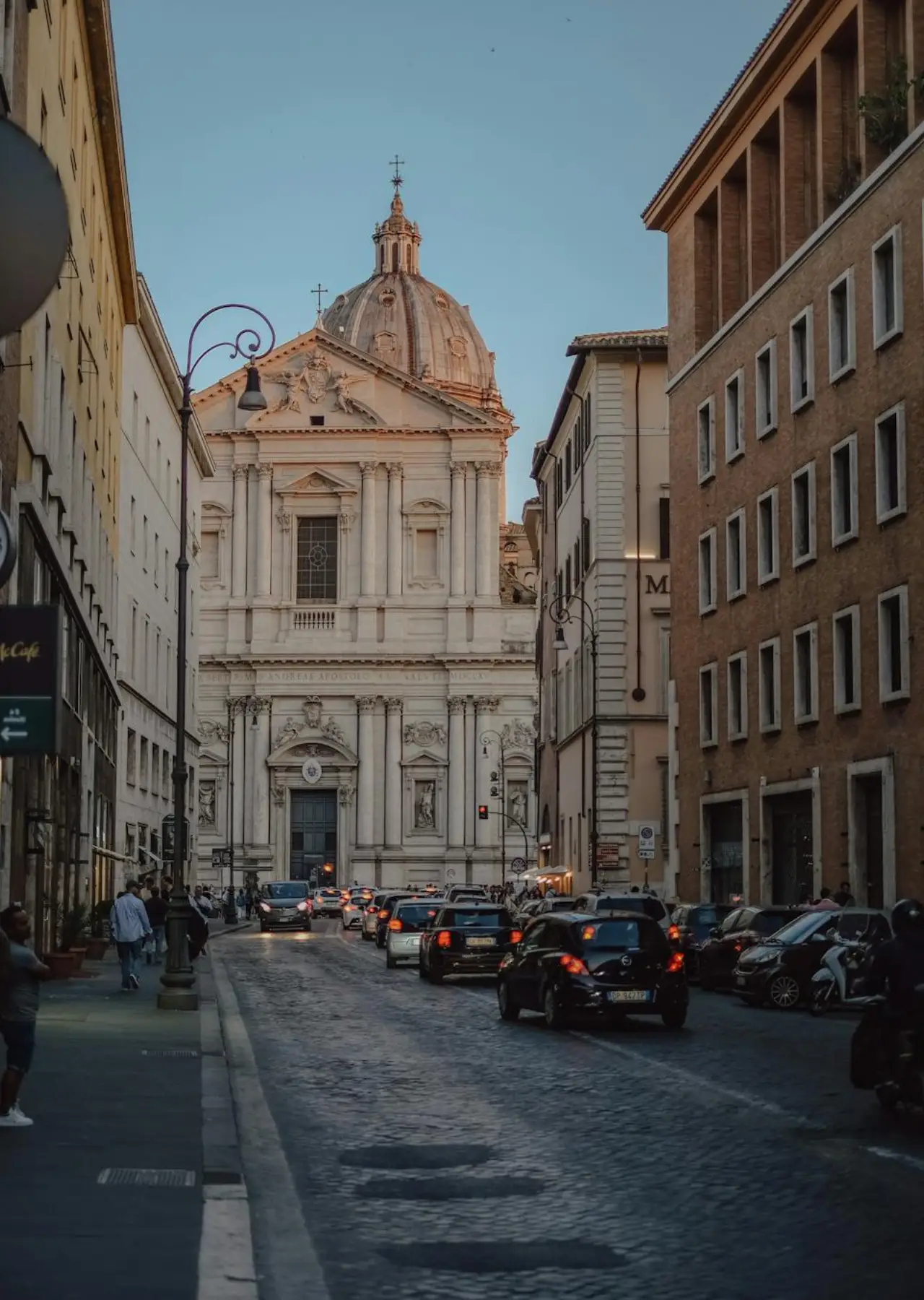
Essential Tips for Traveling in Rome: Make the Most of Your Trip
Visiting Rome is an unforgettable experience, but a little planning can go a long way in ensuring a smooth and enjoyable trip. Here are some practical tips to help you explore the Eternal City like a pro:
🕰️ 1. Plan Your Visit Wisely
- Best Time to Visit: April to June and September to October for pleasant weather and fewer crowds.
- Avoid Peak Hours: Popular attractions like the Colosseum and Vatican Museums are less crowded early in the morning or late afternoon.
- Pre-Book Tickets: Always buy tickets online in advance for major attractions to skip long queues.
🚶 2. Get Around Rome Efficiently
- Walking: The best way to explore Rome’s historic center. Wear comfortable shoes as the cobblestone streets can be challenging.
- Public Transport: Utilize Rome’s metro, buses, and trams. The Roma Pass offers unlimited travel and free or discounted museum entries.
- Taxis & Ride-Sharing: Use official white taxis with meters or apps like Free Now. Avoid unlicensed taxis.
🍕 3. Dining & Food Tips
- Avoid Tourist Traps: Steer clear of restaurants with photos on the menu or waiters calling you in.
- Drink at the Bar: Coffee is cheaper if you drink it standing at the bar instead of sitting at a table.
- Try Local Specialties: Don’t miss out on classic Roman dishes like Carbonara, Cacio e Pepe, and Supplì.
- Tap Water is Safe: You can refill your water bottle at public fountains, called Nasoni, scattered around the city.
💶 4. Money Matters
- Currency: Rome uses the Euro (€).
- Cash vs. Card: While cards are widely accepted, keep cash for small purchases and in markets.
- ATMs: Use official bank ATMs to avoid high fees.
🛍️ 5. Shopping Tips
- Souvenirs: Buy authentic souvenirs in artisan shops instead of tourist stalls.
- Bargaining: Not common in shops but acceptable in markets.
- VAT Refund: Non-EU tourists can claim a tax refund on purchases over €154.94 in a single store.
📸 6. Safety & Etiquette
- Watch for Pickpockets: Especially in crowded areas and on public transportation. Keep bags zipped and valuables secure.
- Dress Appropriately: When visiting churches and religious sites, cover your shoulders and knees.
- Respect Local Customs: Italians greet with “Buongiorno” (Good morning) and “Buonasera” (Good evening).
🕊️ 7. Enjoy Rome’s Free Experiences
- Visit Churches: Many of Rome’s churches are free to enter and feature stunning art and architecture.
- Explore Parks: Relax in beautiful green spaces like Villa Borghese or Aventine Hill Garden.
- Free Museum Days: Many state museums offer free entry on the first Sunday of each month.
🛑 8. Avoid Common Tourist Mistakes
- Skip Sit-Down Drinks at Tourist Cafés: Prices can be significantly higher for sitting.
- Know When Attractions Are Closed: Many museums are closed on Mondays, and some shops close for a break in the afternoon.
- Don’t Sit on Monuments: This can lead to fines in Rome.
💡 9. Pro Tips for a Better Experience
- Download Useful Apps: Apps like Google Maps, Rome Metro, and TheFork (for restaurant reservations) are helpful.
- Stay Hydrated: Especially during the summer months, as Rome can get quite hot.
- Learn Basic Italian Phrases: While many speak English, a little Italian goes a long way!
🚨 10. Emergency Contacts
- Emergency Number: 112 (for police, fire, or medical emergencies).
- Tourist Police (Polizia Turistica): Can assist with issues like lost passports or tourist-related problems.
Overall
Rome is a city where history, culture, and cuisine blend seamlessly to create an unforgettable experience. From exploring ancient ruins and tossing a coin in the Trevi Fountain to indulging in authentic Italian cuisine and discovering hidden gems, the Eternal City offers something for every traveler.
By planning wisely, embracing the local way of life, and savoring every moment, you’ll make the most of your Roman adventure. Whether it’s your first visit or a return trip, Rome’s timeless charm will always leave you wanting more.
So, pack your bags, put on your walking shoes, and get ready to fall in love with La Dolce Vita in Rome!

Dana




